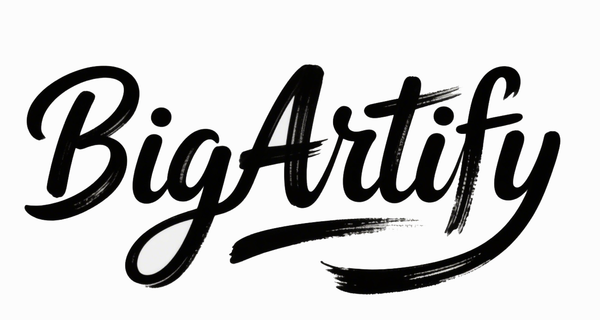Auction Houses Are Bridging the $3 Billion Gap Caused by Declining Art Sales with Luxury Proceeds
The art auction landscape is currently undergoing a significant transformation. For years, major auction houses thrived on booming sales of fine art, but recent times have seen a noticeable downturn. Public auction sales by value have dropped by about 25% in 2024 compared to previous years, resulting in an estimated $3 billion revenue gap for top-tier auction houses worldwide. Faced with this challenge, these institutions have found a creative and effective way to bridge the gap: pivoting their focus towards luxury goods such as high-end handbags, jewelry, collectible cars, and fine wines, which have become essential contributors to their revenue streams.

The Decline in Fine Art Sales
Several factors have contributed to the contraction in fine art auction sales. Market uncertainties, including global economic instability and rising taxes, have made many collectors more cautious. Additionally, the supply of high-quality and rare artworks has thinned at a time when demand for such pieces is softening. Major players in the art auction market, including Sotheby’s, and Christie’s, have reported significant drops in fine art revenues. Sotheby’s fine art sales declined by 31% to $3.8 billion in 2024, while Christie’s saw a 22% fall in the first half of 2025 relative to the previous year.
Despite these declines, auction houses are seeing higher sell-through rates—meaning a larger percentage of the offered lots are actually being sold—reaching levels not seen since 2017. This suggests a pricing reset that is helping value align better with buyer expectations, stabilizing the market even amidst the downturn.
The Rise of Luxury Collectibles
To offset shrinking revenues from art, auction houses have expanded their luxury categories aggressively. High-demand items such as luxury handbags, fine jewelry, watches, vintage cars, and collectible bottles of wine and whiskey have gained prominence. These luxury collectibles not only attract existing wealthy clientele but also engage new buyer demographics looking for tangible and prestigious investments beyond traditional art.
For instance, in the first half of 2025, Christie's generated nearly 30% of its $2.1 billion sales from luxury offerings. This segment saw substantial growth in categories like handbags, watches, and jewelry, with sales increasing by 41%. Sotheby’s reports a similar trend, with about one-third of its total revenue derived from luxury and collectible sales. Such performance highlights the critical role that these categories now play in balancing the effects of declining fine art revenues.
This shift also reflects broader trends among affluent collectors who increasingly view luxury collectibles as part of a diversified portfolio. The lifestyle appeal and investment potential of these items complement traditional art acquisition strategies, making auction houses hubs for both art and luxury lifestyle investing.
Innovations and Strategic Adaptations
Auction houses are adapting not only in the types of items they sell but also in how they conduct sales. Technological advancements have played a key role. For example, Christie’s “Augmented Intelligence” AI art auction in early 2025, dedicated entirely to artificial intelligence-generated art, exceeded expectations and attracted a significant portion of younger bidders, including millennials and Gen Z. This highlights how AI and digital innovations are transforming the auction market and engaging new collector demographics.
Artificial intelligence and data analytics help auction houses more effectively target potential buyers and personalize marketing campaigns. Enhanced online platforms have opened auctions to a global and more diversified clientele, encouraging participation from first-time buyers and collectors unfamiliar with traditional art bidding.
Operationally, auction houses have implemented pricing strategies such as lowering reserve prices to increase transaction volumes and maintain liquidity. They have also ventured into new geographic markets, organizing luxury and art auctions in emerging locations like Saudi Arabia and Paris to tap into fresh pools of buyers.
The Outlook for Art and Luxury Markets
Although the upper echelon of the fine art market remains somewhat subdued, the sustained high sell-through rates and the influx of new collectors point to a market that is adapting rather than collapsing. Many experts and collectors anticipate a recovery or leveling off within the next year, viewing the recent slowdowns as part of natural cyclical corrections.
Auction houses continue to promote interest in emerging art movements and undervalued categories, leveraging storytelling and curatorial expertise to reignite collector enthusiasm. At the same time, the blending of luxury and art offerings broadens engagement and revenue, ensuring auction houses remain financially resilient even through market fluctuations.
Frequently Asked Questions (FAQ)
Q: Why are auction houses focusing more on luxury items lately?
A: Declining fine art sales have compelled auction houses to diversify their revenue streams. Luxury items like handbags, jewelry, and collectible cars are thriving markets and help compensate for financial shortfalls.
Q: How significant is the decline in fine art auction sales?
A: Fine art auction sales have fallen by about 25% in 2024 compared to previous years, leaving an estimated $3 billion revenue gap.
Q: Are luxury auctions profitable for auction houses?
A: Yes, luxury auctions have become essential revenue sources, contributing up to one-third of total sales at some houses.
Q: Is the art auction market expected to recover soon?
A: Many believe the market will stabilize and possibly grow in the coming 6 to 12 months, considering the recent downturn a cyclical adjustment.
Q: How do technology and online platforms impact auctions today?
A: Artificial intelligence and digital sales platforms enable more effective buyer targeting and broaden access, increasing participation, especially from younger and new collectors.
This evolution in auction house strategy underscores their resilience and ability to innovate, ensuring they thrive even as market dynamics shift. By embracing luxury items alongside art, they preserve their central role in global collecting culture and maintain financial viability through uncertain times.
